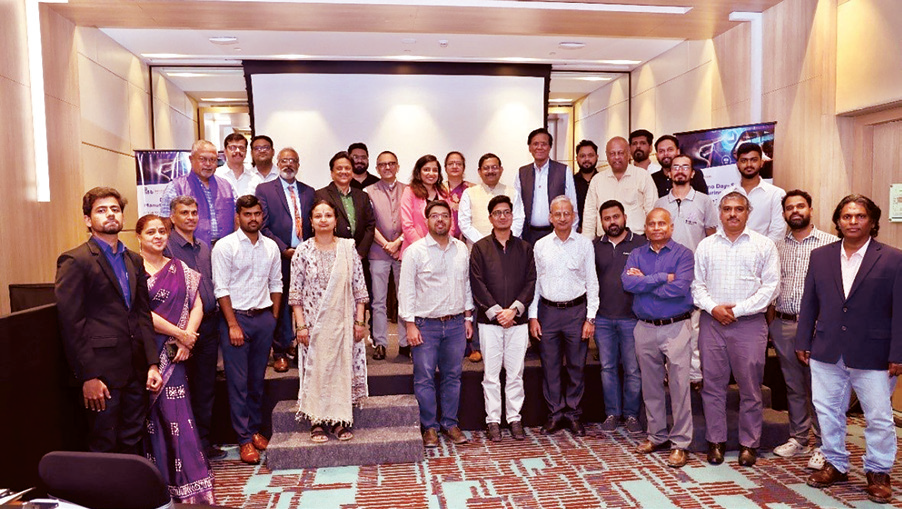
It Will Extinguish the Identity of an India that was Born in 1947
Shikha Mukerjee
The reported demolition and the plan to make a museum out of North and South Blocks – purpose built offices for the imperial Government of India and after 1947, of the new republic – by March 2025 is bizarre.
There is no logic to the upheaval; a purpose built museum will be demolished and two purpose built offices – North and South will be emptied to become the Yuge Yugeen Bharat Indian Museum.
Buildings have histories and demolition is a brutal erasure that rashly overwrites the past.
As Tapati Guha Thakurta, distinguished historian of art and art institutions asks: “What is the announced reason behind the demolition of the 1960 building of the National Museum and the placing at immense risk of all the irreplaceable archaeological and art historical artefacts that it houses? It is a public institution, always intended to be one, and every government stands obliged to hold these objects in safe and professional custody for the nation and for posterity.”
The reported timeline is irresponsible. The National Museum has two lakh artefacts, most of which are priceless and a part of India’s heritage.
Anyone who has ever moved a modest household could tell the Ministry of Culture the impossibility of vacating a premises with two lakh objects within weeks, because the deadline to empty out the existing National Museum buildings has been set for the end of the year.
It took the British Museum two years to declutter, revamp and refurbish the Sir Joseph Hotung Gallery of China and South Asia with its 2000 objects housed in a 115-metre long gallery, because such displacements pose serious curatorial challenges.
Former Culture Secretary Jawhar Sircar has been asking for details ever since the central vista plan was unveiled. He said “I have received only evasive replies,” to questions on if a tender has been called to find a firm that will handle the packing and storage of the two lakh objects?
Common sense suggests that invaluable artefacts cannot be simply packed and shoved into storage. Specialists, of all the different categories of artefacts in the National Museum’s collection, have to be identified and vetted and then allowed to do the job.
National Museum’s priceless artefacts cannot be put into just any warehouse or even a storage complex. Such artefacts need maximum security to ensure that what goes in can be retrieved intact and authentic.
Across the world, there are secretive, super secure, special buildings that house priceless artefacts and art works in transit from auction houses, private sales and to their final destinations.
Most of these storages, like the Headquarters building in Geneva Free Port, are large windowless concrete blocks surrounded by barbed-wire fences, designed to resist earthquakes and fires.
Such buildings on the inside have several rooms that follow specific criteria to fit the highest conservation conditions. Artworks and antiquities are stored in moisture and temperature-controlled rooms conceived as impenetrable safes.
They are locked behind nameless, armoured doors built to hold out against explosives and equipped with biometric readers granting access to only the legally authorised few.
The absence of details and unsatisfactory replies to Sircar suggest that the entire business of packing up and storing the National Museum is opaque.
Sircar said that he had been pursuing the matter and every time he felt he was being fobbed off with replies like “no firm decision has been taken.”
Museums in India loan artefacts for exhibitions in different parts of the country and overseas. These are small bundles of objects for which there are obviously specialists who can handle the packing and shipping.
But packing up two lakh artefacts is an entirely different business. The storage is equally problematic. In the context of the National Museum, as Singh had pointed out in the lecture series ‘Modern Art for a New Nation’ curated by Thakurta, many of its best objects are loans from museums as distant as the British Museum in London.
As national treasures, India’s citizens have a right to be informed, in detail and with transparency, how this near impossible task will be executed.
Thakurta questioned “Does this government have any legal right to meddle with institutions like the National Museum and the National Archives and endanger the historical inheritance of the people of India?”
Demolishing the National Museum because it is aged and infirm, even though it is a mere 60 years old is one thing. Housing it in the North and South Blocks, which are even older and considered unsafe, because they are not earthquake proof seems incredibly silly.
Mor
 English daily published in Bengaluru & Doha
English daily published in Bengaluru & Doha






